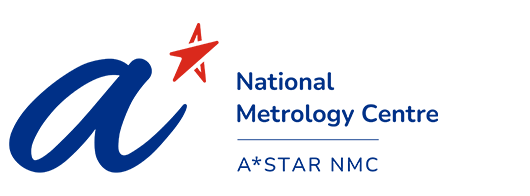NEWS & ARTICLES
Working from Home but too noisy?
COVID-19 has brought many changes to our lives. Working from home is one of them. 8 in 10 workers in Singapore now prefer to work from home or have a flexible work arrangement based on a recent survey [1]. If you have been working from home, have you experienced any difference between working in office and working from home? Has noise become an issue?
Unbeknownst to many, the Workplace Safety and Health Council publishes a guideline for improving Ergonomics in the Workplace [2]. In it, Temperature, Lighting and Noise are listed as the physical aspects of the work environment that have important implications for the safety, health, comfort, and productivity of employees. That means in office buildings, noise is usually minimized by design to improve productivity of employees. In the setting of one’s home, which is typically not designed for work, noise may become particularly noticeable. While exposure to excessive noise at home at levels which can result in noise-induced deafness (NID) is low, prolonged exposure to high-level sound through headphones or earphones during teleconferencing should not be neglected. It could lead to deterioration in people’s hearing in the long run. In addition, background noise can cause distraction, affect job performance, interfere with speech communication and more importantly cause annoyance. A relevant and relatable situation would be the background sounds one hears during video conferencing when the microphones of fellow participants are not muted.
For building residents located within the vicinity of a construction site, one might frequently wonder if the worksite is too noisy – whether the sound level exceeds regulated levels and on a fundamental level how is sound measured and how accurate are the equipment used?
There are many phone apps available which enable smart phones for noise measurement. Smart phones may be used for indicative measurement, however, the results are generally not recognized the same way as those done by a calibrated sound level meter. Studies have shown that smart phones have varied results in noise measurement depending on the phone model, age and apps used. The best performance of the smart phones and apps tested in [3] was within ±1 dB of true noise levels across four different reference conditions. It’s promising that smart phones may eventually be able to deliver reliable sound level measurement results for certain applications, provided that they are well calibrated beforehand.
NEA’s Regulation on Permitted sound levels
The National Environmental Agency (NEA) regulates noise levels based on a set of permissible noise level, and the acceptable levels at residential buildings located within 150m of construction sites are reproduced below [4].
.png?sfvrsn=bc346224_1)
So… What is noise and what do the numbers mean?
Noise is sound and sound can be noise. The difference between sound and noise is that noise is unwanted sound. However, this classification is often subjective and depends on the situation. Take for example the roaring sound of the engines of the FIA Formula One (F1) cars make as they zip through the Marina Bay Street Circuit in Singapore. To many, especially the staff of stores and offices around Marina Bay, the loud sounds is a source of disturbance but to F1 enthusiast and automobile engineers, the sounds emitted by the racecars is a testament to the beauty of the engineering marvel they are witnessing.
To make sense of the numbers shown in the table above, three attributes of sound will be discussed – loudness (for dB), pitch (for ‘A’ in dB(A)), and duration (for Leq).
Loudness
Sound is all about energy. Also known as airborne acoustics, sound propagates as pressure waves though air, which acts as a transmission medium. The louder the sound, the higher the energy being transmitted. Therefore, there exist regulations such as Workplace Safety and Health (WSH) Act - WSH (Noise) Regulation 2011 [5] and NEA permissible noise limits [4] to prevent noise related discomfort and injuries. Common sources of environmental sound experienced in one’s home includes the compressor unit of the air-conditioning systems, the traffic on roads and expressway, the MRT trains passing by, and the highlight of this article - construction works.
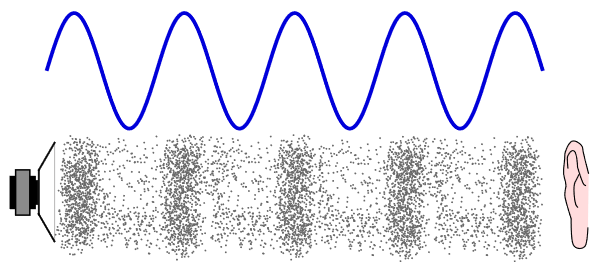
The sound emitted or received (heard) is measured as Sound Pressure Level (SPL) with the unit decibels (dB) in honor of Alexander Graham Bell, the inventor of the first practical telephone. Taking reference from the International Electrotechnical Commission (IEC 61672-1 [7]), the SPL is a measure of the difference between the instantaneous total pressure and the corresponding static pressure compared against a reference value. The equation is given as
To put the numbers in perspective, because it is measured in logarithmic scale, the permissible sound level from Monday to Saturdays at 10pm to 7am (55 dB(A)) is TEN TIMES SOFTER than from 7am to 7pm (75 dB(A)), and is approximately 3.1 times softer than from 7pm to 10pm (65 db(A)).
Pitch
The ‘(A)’ in dB(A) denotes A-weightings. The need for the weightings arises because the human ear, while capable of detecting frequencies between 20 Hz and 20 kHz, does not have a flat spectral response. In other words, the ear is not equally sensitive to sounds across the audio frequencies. In particular, the ear is comparably less sensitive to lower frequencies such as water dripping from a tap as compared to the ticking of a stopwatch.
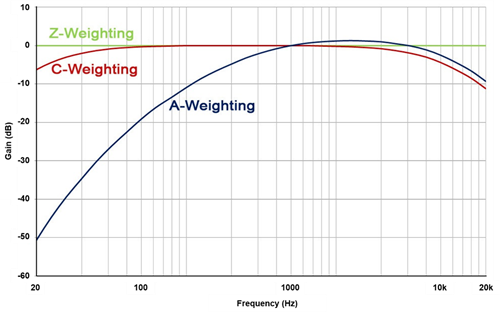
Therefore, the set of A-weightings which is represented by a curve, is applied to the sound levels measured by instruments to have a good indication of the sound levels that humans perceive. This functionality is a standard feature in many instruments and is widely adopted for environmental noise measurement and for accessing potential hearing damage caused by loud noise.
Duration
Sound is usually measured over a period such as 5 minutes, 1 hour or 12 hours indicated in Table 1. To describe the varying sound levels over the predetermined duration with a single decibel value, Leq, which is defined as equivalent continuous sound level is commonly used. It is calculated by averaging all measured sound pressure levels within the indicated duration.
Sound Level Meter (SLM)
Sound is measured using a microphone and while there are different types of microphones, the free-field microphones are commonly used for environmental noise measurements. Professional portable sound level meters similar to the SLM shown in Figure 4 are commonly used by assessors when conducting site surveys. However, for long term monitoring of noise levels at construction sites as required by NEA, specially designed sound level meters with additional considerations for power, data storage and weatherproofing are employed.
More importantly, the performance of the SLMs changes with time (sensor drift) and situation (such as dropping the SLM). To ensure the accuracy of the measurement readings, all SLMs which are used for measurements are required to be calibration according to IEC 61672-3 [10] standard periodically. A calibration certificate will be issued which states the test results, the equipment used and of importance, the statement of uncertainty. The statement of uncertainty affects the classification of the SLM and results in the suitability of usage for the particular purpose.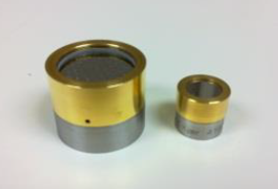
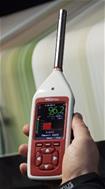
A*STAR’s National Metrology Centre (NMC) is the national measurement institute of Singapore, dedicated to advancing measurement science in support of an innovative and competitive economy. The 10 specialist metrology laboratories within NMC develop and maintain national reference standards and disseminate measurement traceability for all physical measurements in Singapore. Among them, Acoustics & Vibration Laboratory maintains the acoustic measurement standards and disseminate measurement traceability for noise measurement.
As part of disseminating metrology knowhow to the industry, NMC periodically organizes courses which cater to personnel of all levels of expertise. General courses include ‘Basic Metrology and Measurement Uncertainty’ and specialised courses conducted by the Acoustics & Vibration (AV) laboratory focuses on four areas, namely airborne acoustics, underwater acoustics, ultrasound, and vibrations.
Please visit Online MSTC courses and click on the course title for more details. Kindly register at least 2 weeks prior to course commencement to secure your place.
For more enquiries, please contact NMC’s Acoustics & Vibration Lab, Dr Cui Shan at cui_shan@nmc.a-star.edu.sg.
References
[1] The Straits Times, "8 in 10 in Singapore want to work from home or have more flexibility," 12 October 2020. [Online]. Available: https://www.straitstimes.com/singapore/8-in-10-in-singapore-want-to-work-from-home-or-have-more-flexibility. [Accessed 08 January 2021].
[2] Workplace Safety and Health Council, "Workplace Safety and Health Guidelines - Improving Ergonomics in the Workplace," January 2014. [Online]. Available: https://www.wshc.sg/files/wshc/upload/cms/file/2014/WSH_Guidelines_ImprovingErgonomicsintheWorkplace.pdf. [Accessed 11 November 2020].
[3] E. &. K. E. Murphy, "Testing the accuracy of smartphones and sound level meter applications for measuring environmental noise," Applied Acoustics, vol. 106, pp. 16-22, May 2016.
[4] National Environmental Agency, "Construction Noise Control," [Online]. Available: https://www.nea.gov.sg/our-services/pollution-control/noise-pollution/construction-noise-control. [Accessed 11 November 2020].
[5] Parliament of Singapore, "WORKPLACE SAFETY AND HEALTH ACT (CHAPTER 354A), WORKPLACE SAFETY AND HEALTH (NOISE) REGULATIONS 2011," 20 July 2011. [Online]. Available: https://sso.agc.gov.sg/SL/WSHA2006-S424-2011. [Accessed 11 November 2020].
[6] Pluke, "Diagram showing physical manifestation of a sound wave through air from a speaker to a human ear," 17 February 2012. [Online]. Available: https://commons.wikimedia.org/wiki/File:CPT-sound-physical-manifestation.svg. [Accessed 11 November 2020].
[7] International Electrotechnical Commission, "Electroacoustics - Sound level meters - Part 1: Specifications, IEC 61672-1:2013," 2013.
[8] Acousticator, "A, C and Z frequency weightings for sound," 22 January 2016. [Online]. Available: https://commons.wikimedia.org/wiki/File:Sound-Pressure-Level-Frequency-Weightings-wiki.jpg. [Accessed 11 November 2020].
[9] Phonical, "Graph of LAeq sound level measurement calculated over 5 minutes," 16 March 2018. [Online]. Available: https://commons.wikimedia.org/wiki/File:LAeq_5_minute.jpg. [Accessed 11 November 2020].
[10] International Electrotechnical Commission, "Electroacoustics - Sound level meters - Part 3: Periodic tests, IEC 61672-3:2013," 2013.
[11] Cirrus Research Plc, "An integrating-averaging cirrus optimus sound level meter complying with IEC 61672 : 2003," 13 April 2012. [Online]. Available: https://commons.wikimedia.org/wiki/File:Optimus_Sound_Level_Meter.jpg. [Accessed 11 November 2020].
A*STAR celebrates International Women's Day

From groundbreaking discoveries to cutting-edge research, our researchers are empowering the next generation of female science, technology, engineering and mathematics (STEM) leaders.
Get inspired by our #WomeninSTEM
